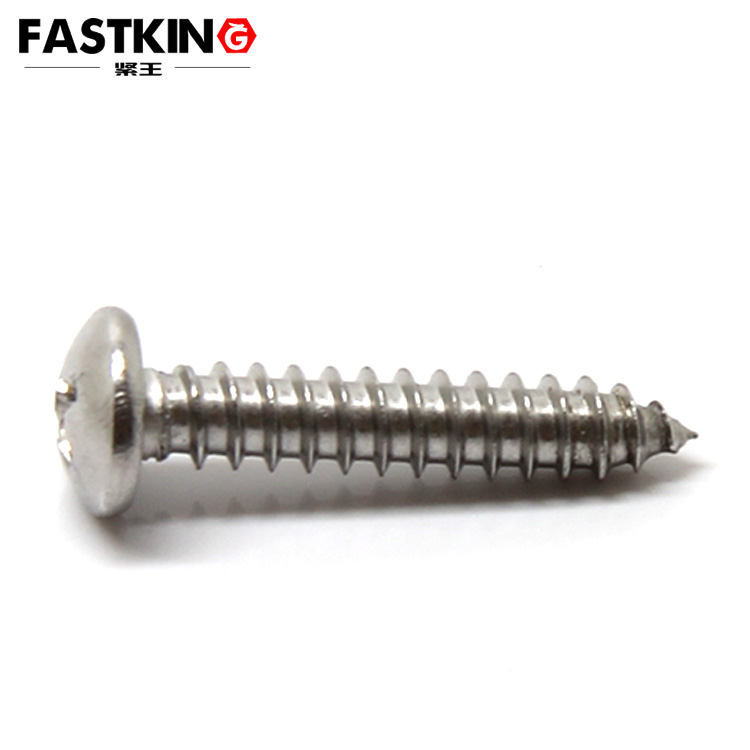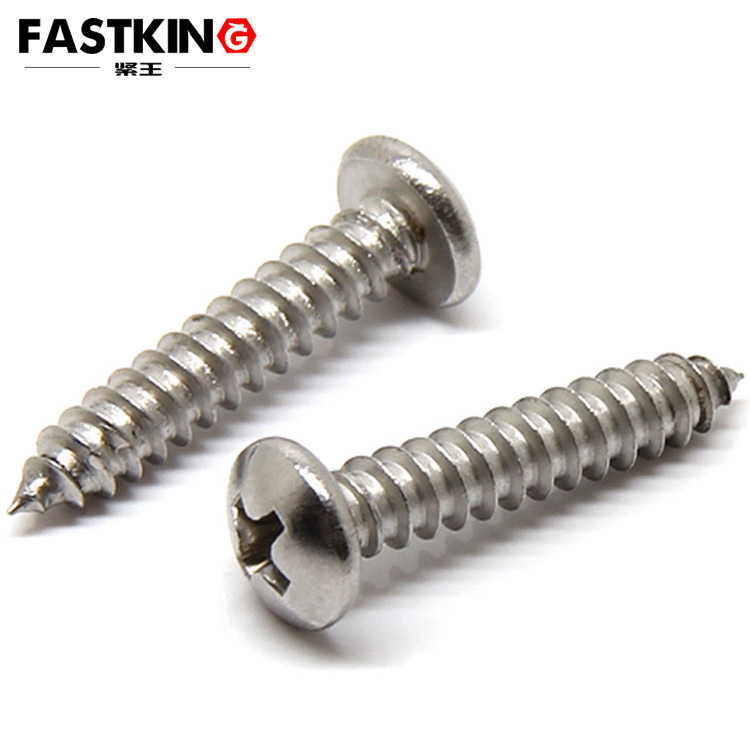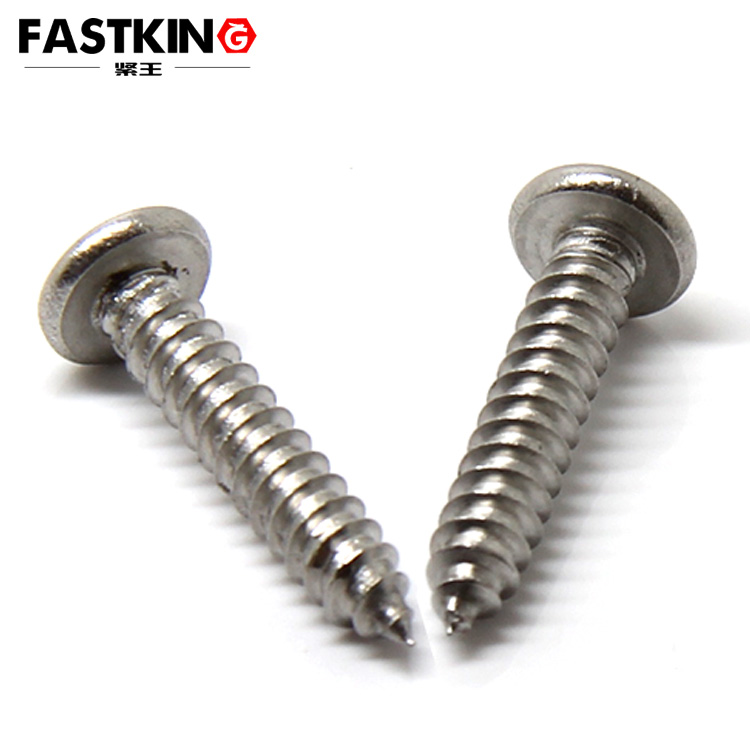The Use and Applications of Round Head Cross-Head Self-Tapping Screws
Introduction
Round head cross-head self-tapping screws are a common type of fastener, featuring a rounded head and a cross-shaped slot. These screws are designed to form their own threads in materials such as wood, metal, and plastic without the need for pre-tapping. They are widely used in scenarios that require quick installation and reliable fastening.
Structure of Round Head Cross-Head Self-Tapping Screws
Typically made from high-strength steel, round head cross-head self-tapping screws consist of the following main components:
1. Round Head: This design provides an aesthetically pleasing appearance and prevents the screw head from protruding, which is especially useful in applications where a smooth surface is required.
2. Cross-Shaped Slot: Compatible with cross-head screwdrivers, this slot facilitates easy tightening and loosening of the screw.
3. Self-Tapping Threads: These threads are designed to cut into the material, allowing the screw to form its own threads without the need for pre-drilling holes, although pre-drilling is sometimes recommended for harder materials.
How to Use Round Head Cross-Head Self-Tapping Screws
1. Selecting the Right Screw
Before using round head cross-head self-tapping screws, it is essential to choose the appropriate size based on the thickness and strength of the material. Common sizes include M3, M4, and M5.

2. Pre-Drilling (Optional)
For hard materials such as metal or hardwood, pre-drilling is recommended. Use a drill bit with a diameter slightly smaller than the screw's diameter to create a pilot hole in the material. This step helps prevent the material from cracking and ensures smooth installation.
3. Inserting the Screw
Align the tip of the self-tapping screw with the pilot hole or the material surface, ensuring that the screw is perpendicular to the surface.
4. Tightening the Screw
- Use a cross-head screwdriver or an electric screwdriver to turn the screw clockwise. Apply steady pressure until the screw is fully inserted into the material.
- Ensure that the screw head is flush with or slightly recessed into the material surface for the best appearance and secure fastening.
5. Checking the Fastening Effect
After tightening, inspect the screw to ensure it is securely fastened and that there is no looseness or slippage.
Applications of Round Head Cross-Head Self-Tapping Screws
1. Construction Industry
In the construction industry, round head cross-head self-tapping screws are commonly used to fix materials such as gypsum boards, metal frames, and wooden structures. Their self-tapping feature and high strength allow for quick and reliable fastening of various construction materials.
2. Furniture Manufacturing
During furniture manufacturing, these screws are used to secure wooden panels, metal parts, and plastic components. The rounded head design not only provides a neat appearance but also prevents the screw head from protruding, avoiding scratches or damage to other surfaces.
3. Electronics Assembly
In electronics assembly, round head cross-head self-tapping screws are used to fix circuit boards, casings, and internal components. Their small size and precise fastening capabilities make them ideal for handling delicate electronic components.
4. Automotive Manufacturing
In automotive manufacturing, these screws are used to fix interior panels, dashboards, and body parts. Their high strength and corrosion resistance make them suitable for the demanding tasks in automotive production.
5. Appliance Manufacturing
In the manufacturing of household appliances such as washing machines, refrigerators, and air conditioners, round head cross-head self-tapping screws are used to secure casings and internal structures. Their self-tapping function and high strength allow for quick and reliable fastening of various appliance components.

IV. Precautions for Use
1. Choose the Right Screw Size: Select screws that match the thickness and strength of the material to avoid issues with screw length.
2. Avoid Over-Tightening: When tightening the screw, avoid excessive force to prevent damage to the screw or the material.
3. Pre-Drilling: For hard materials, pre-drilling is recommended to prevent cracking or slippage.
4. Regular Inspection: Periodically check the fastening effect of the screws and replace any loose or damaged ones to ensure the safety and stability of the structure.
Conclusion

Round head cross-head self-tapping screws are versatile and efficient fasteners, widely used in construction, furniture manufacturing, electronics assembly, automotive manufacturing, and appliance manufacturing. Proper use and maintenance of these screws can significantly improve work efficiency and operational safety. We hope this article helps readers better understand and utilize round head cross-head self-tapping screws.
